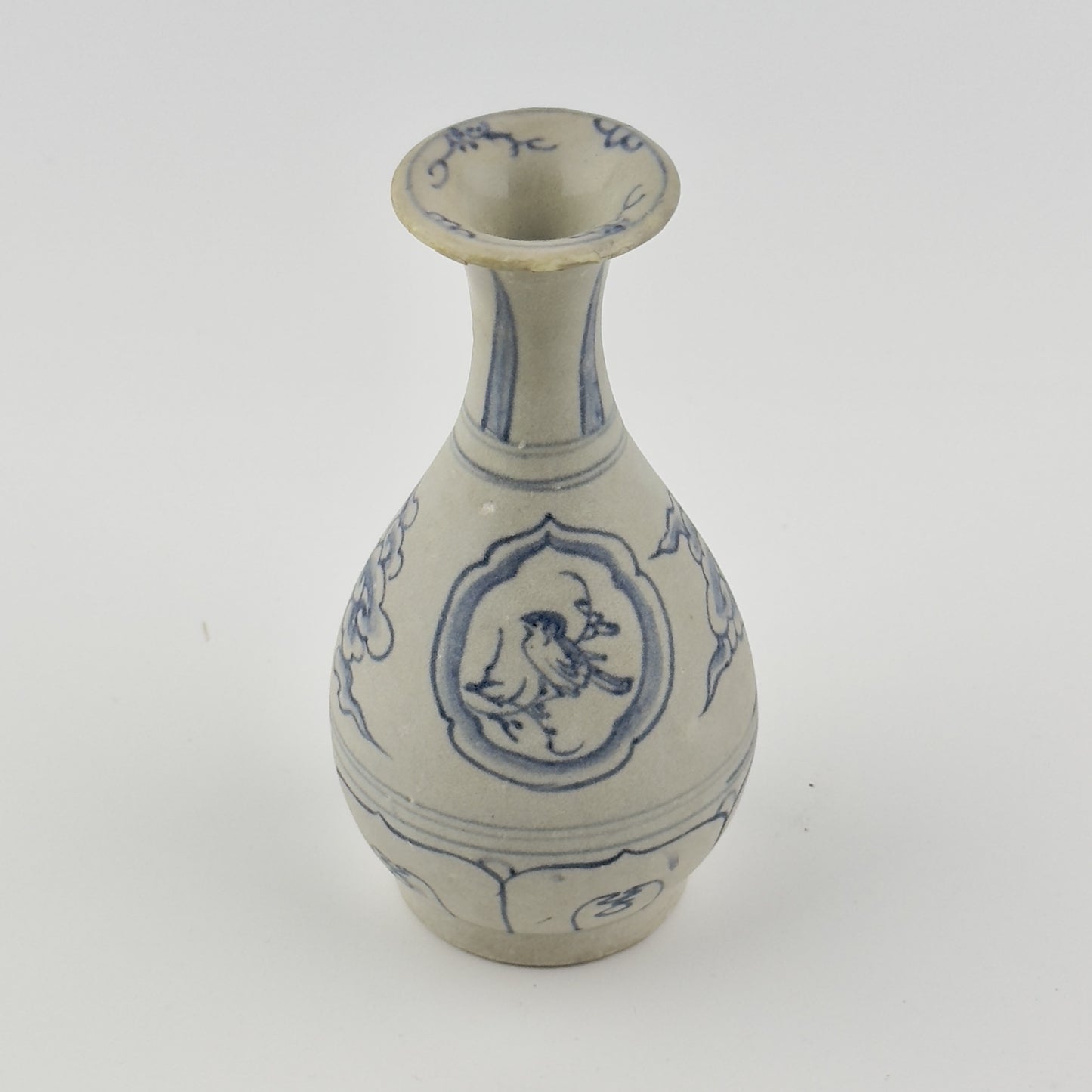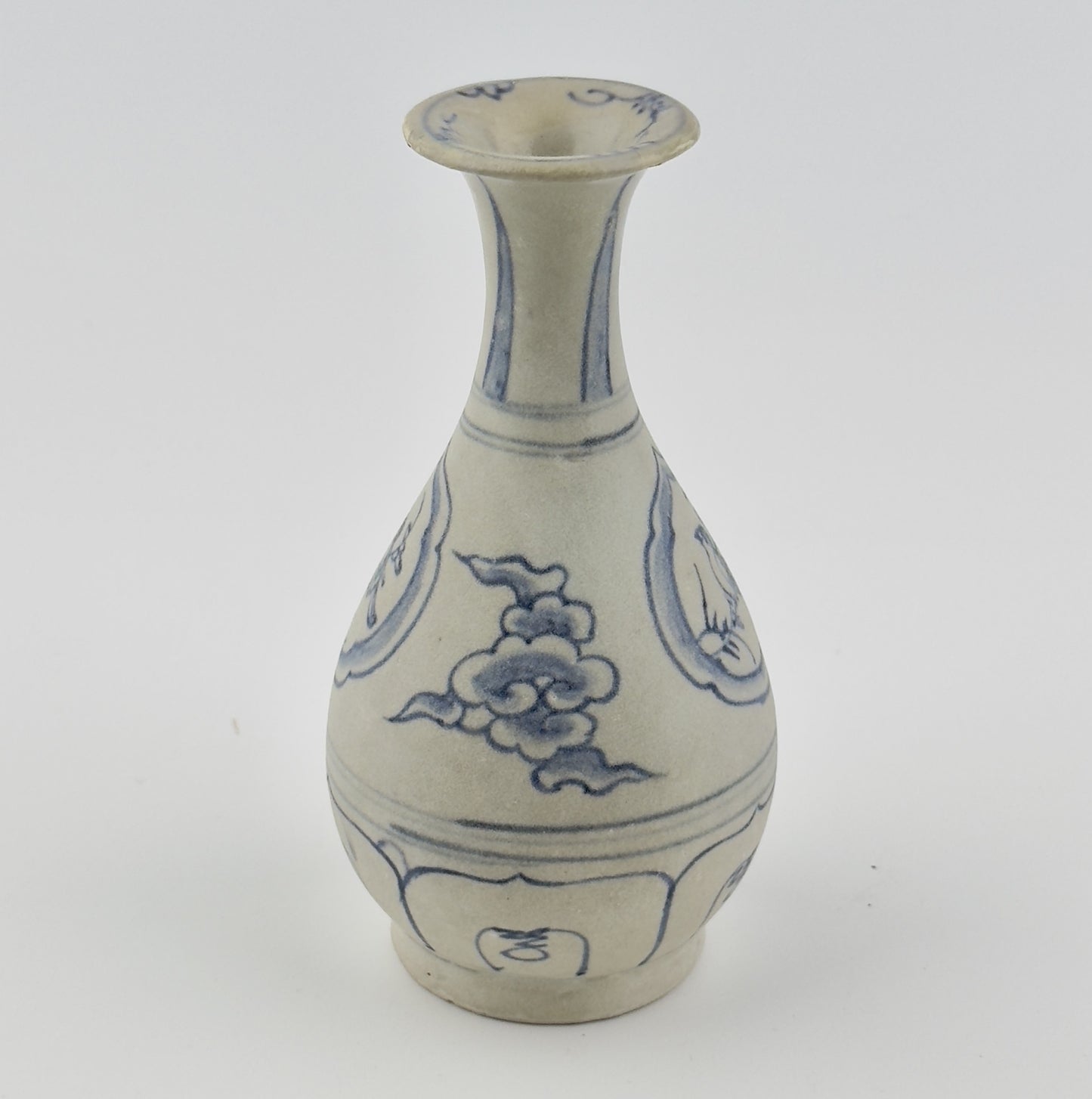ANNAMESE STONEWARE VASE WITH UNDERGLAZE BLUE, HOI AN HOARD, LATE 15TH CENTURY
ANNAMESE STONEWARE VASE WITH UNDERGLAZE BLUE, HOI AN HOARD, LATE 15TH CENTURY
Couldn't load pickup availability
At the center of the vase, within a rounded frame, a bird is depicted perched on a small branch. The bird’s feathers and body are finely detailed, while the beak and eyes are rendered simply but clearly, conveying a sense of calm and serenity.
The surrounding frame is shaped like a shield with rounded and pointed edges, highlighting the central design. Within this frame, the bird is accompanied by branches and leaves, evoking a scene from nature that brings a harmonious, peaceful feel to the vase.
On another side of the vase, cloud motifs are gracefully drawn. These clouds are depicted with soft, flowing curves, giving the impression of floating gently in the sky. Though simple in form, the clouds convey a sense of movement and volume, adding a dynamic yet subtle energy to the overall design.
At the base of the vase, geometric patterns are arranged in a repeating sequence. These designs provide a sense of structure and stability, grounding the vase while complementing the rest of the decoration. The exceptionally clear design and compact form give this piece its unique character.
Dates : 15th century Le DynastyRegion : North Annam(Vietnam)
Type : Waterdropper(Grey-blue underglaze)
Origin : Annam (Vietnam), recovered presumably from the Hoi An ship
Dimension : 14cm(Height) x 7cm(Diameter)
Condition : Good(Minor chip on the mouth)
Reference : Double checked with reference to the original catalogue
1) Butterfield Treasures Hoi An Hoard Auction Catalogs / San Francisco Butterfields 2000
2) Asian Ceramic Found along Maritime Silk Route / National Maritime Museum of Korea
3) Vietnamese Ceramics Miniatures / Catalogue of the exhibition in Zurich Sep 1989 Switzerland (Collection of Ulrich J. Beck)
* Vietnamese trade ceramics
Around the mid-14th century, Vietnam developed its ceramics production technology by producing blue and white porcelain, and began to export it overseas. During this period, China Ming Dynasty implemented a policy of lifting the ban from 1371 to 1657 and restricted foreign trade. This served as a good opportunity in the trade history of Vietnamese ceramics, and ceramic exports boomed from the late 15th to the 16th century, expanding sales channels not only to Southeast Asia but also to Japan, the Middle East, and several European countries.
During 15~16th century, Vietnam's international trade policy became much more liberal than in the past. In northern Vietnam, commerce became more active as markets were formed around ports, riverine ports, and handicraft villages. This led to the emergence of many large commercial centers such as Phố Hiến, Thăng Long and Hội An.
Through this, Vietnam's international trade and economy also grew significantly. In the above commercial area, stores of European merchants from the Netherlands, England, France, and Portugal were opened and operated. Merchants from many countries around the world entered Vietnam and engaged in intermediate trade.


























